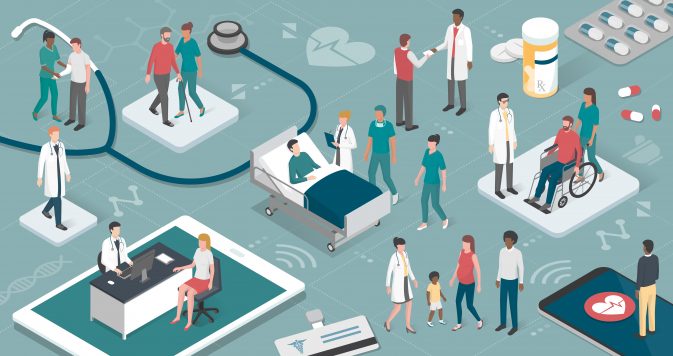A Doctor’s Perspective on Balancing Health and Livelihoods

In March, a report from Imperial College London concluded that 2.2 million Americans could die as a result of the coronavirus—a finding broadly advertised in the mainstream media.
At the time, the projection warranted widespread lockdown measures to give the medical community more time to prepare and stockpile personal protective equipment, ventilators, and other resources. But a lot has changed since March—including the models—and the country’s approach to addressing the pandemic should also adapt.
Dire warnings—which helped inform initial policy decisions—have gone unfulfilled. The Institute for Health Metrics and Evaluation now predicts fatalities resulting from the virus will be far lower than previous estimates. Death is a tragedy under any circumstance, but it’s important to consider context.
New coronavirus cases are trending downwards in the U.S. and many less populous areas have escaped the brunt of the pandemic altogether. Even new cases in New York and New Jersey have collapsed.
For those who do get the virus, the death rate is likely much lower than previously thought. In March, the World Health Organization jarringly proclaimed the fatality rate to be 3.4 percent. But antibody testing in Santa Clara, Los Angeles, and New York finds COVID-19 infections to be far more widespread—which means the true death rate is also a fraction of prior assessments. New CDC estimates peg the death rate at 0.4 percent.
As a result, forecasts of hospitals overrun with coronavirus patients have also, thankfully, not come to fruition. In fact, many health facilities across the country have been left nearly empty—especially in rural communities. A surge in patients in cities like New York or Detroit are an exception, rather than the rule. Even field hospitals constructed in urban areas by the Army Corps of Engineers—which intended to provide care to overflow patients—have remained little used. Most have treated zero patients.
It’s evident that isolation efforts and social distancing protocols have helped the U.S. dodge the worst-case scenario. The medical community and other frontline workers deserve a standing ovation. But unfortunately, we haven’t avoided severe economic consequences.
Since mid-March, more than 40 million Americans have applied for unemployment benefits; 20.5 million people lost their jobs in April alone. Even though the latest jobs report indicates the beginning of a rebound, the unemployment rate currently sits at 13.3 percent—a level reminiscent of the Great Depression. And even with the Paycheck Protection Program (PPP)—which provided a lifeline to over four million businesses and saved more than 30 million jobs—companies are being forced to permanently close hand-over-fist.
Although I’m a doctor, I’m also in private practice, which makes me a small business owner. I understand we need to balance both the health and economic consequences of the virus. The pause in business sparked by the pandemic has brought my practice—which employs 15 staff members—to the verge of bankruptcy. For the sake of my business and many others, it’s time to focus on reopening society and getting the economy back up and running.
We have learned a tremendous amount about the behavior of the virus, who is at greatest risk, and who is not. People 65 and older, particularly those who live in a nursing home or long-term care facility, and those who are immunocompromised, severely obese, diabetic, or have chronic kidney or liver disease are at greatest risk. Efforts should be directed toward protecting these groups while getting everyone else fully back to work, school, church, sports, and all other activities enjoyed in the U.S. with maximal common sense and minimal restrictions.
The value of actions taken by policymakers and public health officials amid the pandemic will be endlessly debated. But regardless of who did what, it’s clear the worst health impacts have been avoided. Business restrictions should continue to be lifted to reflect that change. Leaving them in place for too long will cause more harm than the virus itself.
Dr. Kristin Held is an ophthalmic surgeon with a private practice in San Antonio, Texas and a partner of the Job Creators Network Foundation.





